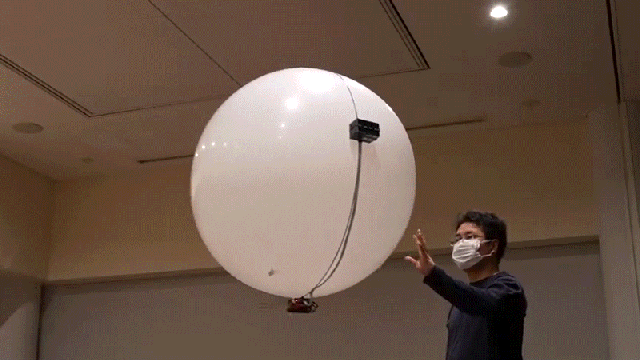The old adage that what goes up must come down seems to apply especially to drones, and during an unplanned descent, their exposed spinning propeller blades can be quite dangerous. As a safer alternative, NTT Docomo, a Japanese mobile carrier, has proposed a camera-equipped blimp that navigates an indoor space using harmless sound waves for propulsion.
The speed will vary depending on the size of a drone, the size of the propellers, and the craft’s payload, but a drone’s propellers can easily hit speeds of 10,000 RPM, and given the fact that the props are often left fully exposed to reduce the weight of a drone they can cause a lot of damage should they make contact with objects or people even if the propeller is made from lightweight plastic. Drones are an even bigger safety risk when flown indoors, as they’re often used to capture footage from unique angles during sporting events or concerts over large crowds of people.
This is why you’ll often see miniature helium-filled blimps used for indoor aerial photography instead, but while there’s less risk of them suddenly falling out of the sky, they still rely on spinning propellers for steering, so they’re not completely safe. NTT Docomo’s solution is to pair a spherical helium balloon with a high-res camera hanging off the bottom, and sets of ultrasonic transducers mounted to either side.
Like a speaker, the ultrasonic transducers vibrate to push air, but instead of pumping out music, here they’re designed to generate just enough air movement to manoeuvre the craft in any direction, even up and down. The transducers are completely safe to touch, so crashes are no longer a safety risk, are much quieter than spinning propellers (making capturing audio from the blimp a possibility), and they require much less energy than electric motors do (the helium is doing most of the work to keep the drone aloft) so flight times can be considerably longer.
NTT Docomo has plans to commercialize the drone as early as March of next year, and in addition to improved safety, other features include the use of internal LEDs to turn each craft into a light show, as well as automated flight capabilities through the use of wireless data networks.
